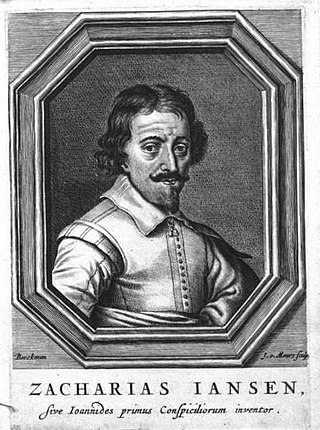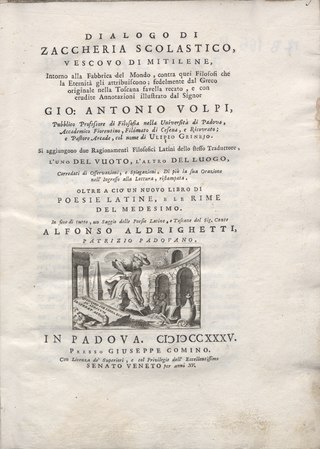| Zacharias I | |
|---|---|
| King of Makuria | |
| Predecessor | Merkurios |
| Successor | Simeon |
| Born | Dongola |
| Religion | Coptic Orthodox Christianity |
Zacharias I (c. 722)[ clarification needed ] was a ruler of the Nubian kingdom of Makuria.
According to Severus of El Ashmunein, Zacharias was the son of his predecessor, Merkurios. 1 Severus gives the impression that his reign was brief, for he states that "Zacharias did not choose to become king, but occupied himself with the word of God and the salvation of his soul" and appointed as king "a kinsman of his named Simon". When Simon died, Zacharias then appointed Abraham to replace him, and later deposed Abraham and replaced him with Markos.
Severus does not mention Zacharias in his account of how Kyriakos became king, so Zacharias may have died before that occasion.

Pope Zachary was the bishop of Rome from 28 November 741 to his death. He was the last pope of the Byzantine Papacy. Zachary built the original church of Santa Maria sopra Minerva, forbade the traffic of slaves in Rome, negotiated peace with the Lombards, and sanctioned Pepin the Short's usurpation of the Frankish throne from Childeric III. Zachary is regarded as a capable administrator and a skillful and subtle diplomat in a dangerous time.

Lucius Septimius Severus was Roman emperor from 193 to 211. He was born in Leptis Magna in the Roman province of Africa. As a young man he advanced through the customary succession of offices under the reigns of Marcus Aurelius and Commodus. Severus seized power after the death of the emperor Pertinax in 193 during the Year of the Five Emperors.

The Tetrarchy was the system instituted by Roman emperor Diocletian in 293 AD to govern the ancient Roman Empire by dividing it between two emperors, the augusti, and their junior colleagues and designated successors, the caesares. This marked the end of the Crisis of the Third Century.
Aegidius was the ruler of the short-lived Kingdom of Soissons from 461 to 464/465. Before his ascension he was an ardent supporter of the Western Roman emperor Majorian, who appointed him magister militum per Gallias in 458. After the general Ricimer assassinated Majorian and replaced him with Emperor Libius Severus, Aegidius rebelled and began governing his Gallic territory as an independent kingdom. He may have pledged his allegiance to the Eastern Roman emperor Leo I.
The Patriarch of Antioch is a traditional title held by the bishop of Antioch. As the traditional "overseer" of the first gentile Christian community, the position has been of prime importance in Pauline Christianity from its earliest period. This diocese is one of the few for which the names of its bishops from the apostolic beginnings have been preserved. Today five churches use the title of patriarch of Antioch: one Oriental Orthodox ; three Eastern Catholic ; and one Eastern Orthodox.

Severus the Great of Antioch, also known as Severus of Gaza or the Crown of Syrians, was the Patriarch of Antioch, and head of the Syriac Orthodox Church, from 512 until his death in 538. He is venerated as a saint in the Oriental Orthodox Church, and his feast day is 8 February.

Zacharias Janssen; also Zacharias Jansen or Sacharias Jansen; 1585 – pre-1632) was a Dutch spectacle-maker who lived most of his life in Middelburg. He is associated with the invention of the first optical telescope and/or the first truly compound microscope, but these claims may be fabrications put forward by his son.

The term Western Roman Empire is used in modern historiography to refer to the western provinces of the Roman Empire, collectively, during any period in which they were administered separately from the eastern provinces by a separate, independent Imperial court. Particularly during the period from 395 to 476 AD, there were separate, coequal courts dividing the governance of the empire into the Western provinces and the Eastern provinces with a distinct imperial succession in the separate courts. The terms Western Roman Empire and Eastern Roman Empire were coined in modern times to describe political entities that were de facto independent; contemporary Romans did not consider the Empire to have been split into two empires but viewed it as a single polity governed by two imperial courts for administrative expediency. The Western Roman Empire collapsed in 476, and the Western imperial court in Ravenna was formally dissolved by Justinian I in 554 AD.

Vologases V was King of Kings of the Parthian Empire from 191 to 208. As king of Armenia, he is known as Vologases II. Not much is known about his period of kingship of Armenia, except that he put his son Rev I on the Iberian throne in 189. Vologases succeeded his father Vologases IV as king of the Parthian Empire in 191; it is uncertain if the transition of power was peaceful or if Vologases took the throne in a civil war. When Vologases acceded the Parthian throne, he passed the Armenian throne to his son Khosrov I.
Kyriakos or Cyriacus was a ruler of the Nubian kingdom of Makuria. While some authorities place his reign between Merkurios and Zacharias I, according to Severus of El Ashmunein, Kyriakos succeeded Markos.
Simon was ruler of the Nubian kingdom of Makuria.
Abraham was ruler of the Nubian kingdom of Makuria.
Markos was ruler of the Nubian kingdom of Makuria. According to Severus of El Ashmunein, Markos ruled for only six months.1
Zoilus served as Greek Patriarch of Alexandria between 541 and 551.

Libius Severus, sometimes enumerated as Severus III, was emperor of the Western Roman Empire from 461 to his death in 465. A native of Lucania, Severus was the fourth of the so-called Shadow Emperors who followed the deposition of the Valentinianic dynasty in 455. He ruled for just under four years, attaining the throne after his predecessor, Majorian, was overthrown by his magister militum, Ricimer. Severus was the first of a series of emperors who were highly dependent on the general, and it is often presumed that Ricimer held most of the de facto power during Severus' reign

Zacharias of Mytilene, also known as Zacharias Scholasticus or Zacharias Rhetor, was a bishop and ecclesiastical historian.
Carl Gustaf Kröningssvärd was a Swedish lawyer and historian.
Ignatius II was the Patriarch of Antioch and head of the Syriac Orthodox Church from 878 until his death in 883.
Events from the year 1682 in Denmark.